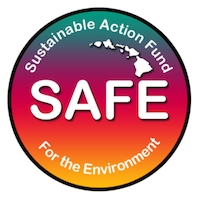We’re better off if some environmental battles were resolved with innovation and negotiation rather than in a courtroom.
In 2012, Earthjustice sued Maui County on behalf of four Maui based environmental groups: West Maui Preservation Association, the Hawaii Wildlife Fund, Sierra Club-Maui Group, and the Surfrider Foundation over the operation of four injection wells associated with the Lahaina Wastewater Reclamation Facility.
Last week, the U.S. Supreme Court agreed to hear the case.
The issue: does the Clean Water Act apply to a wastewater facility where effluent disposal reaches navigable waters indirectly via injection wells?
Wastewater treatment plants basically fall into three categories: primary, secondary and tertiary, with primary being the lowest level of treatment and tertiary being the highest. LWRF is a secondary treatment plan. Wastewater treatment plants collect the wastewater from toilets, sinks, and drains across the island and sends it to a treatment plant.
The treated water is called effluent. The effluent has to go somewhere. Where and when possible, some of it can be used for irrigation, industrial or other non-potable purposes. But the rest needs to be disposed of, so it gets discharged either into the ocean, reservoirs or underground injection wells.

Darla White/Hawaii DLNR
Injection wells are pretty much what they sound like. Pipes allow for injecting substances into the ground as opposed to a traditional well where you would be pumping something out. On Maui, there are a total of 17 wells, ranging in depths from 180 to 385 feet.
Injection wells are fairly common. Currently regulated under the Safe Water Drinking Act, LWRF is considered a Class V well. The EPA estimates there are approximately 650,000 wells operating in the United States today.
Yet, the injection wells at the at LWRF has been an issue for the community for years. Studies have effectively shown the effluent reaches the ocean and adversely impacts marine life, especially coral.
By

